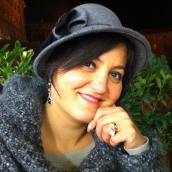Multiple Applications for Ceramic Materials
A special issue of Materials (ISSN 1996-1944). This special issue belongs to the section "Materials Physics".
Deadline for manuscript submissions: closed (10 July 2022) | Viewed by 6708

Special Issue Editor
Interests: solid-state-laser; laser material characterizations; trasparent policrystalline ceramics; laser crystals; non-linear optics; LED thecnology
Special Issues, Collections and Topics in MDPI journals
Special Issue Information
Dear Colleagues,
In the last decade, many efforts have been focused on the fabrication and development of transparent polycrystalline ceramics because they can be used as host materials for solid-state lasers (SSL). Ceramics doped with rare-earth elements (RE) such as Yb3+, Nd3+, Tm3+, Dy3+, etc, has been considered a promising and attractive way to build up efficient and high-power diode-pumped SSL with short duration pulses.
If compared with single crystals, ceramic fabrication processes make it possible to obtain samples with a more uniform dopant distribution, high levels of doping, excellent thermo-mechanical and optical properties. Moreover, they are more economically advantageous than crystals due to lower processing temperatures and shorter processing times. Since the first laser oscillations many relevant experimental results have been obtained by RE:(Y2O3, YAG, LuAG, Lu2O3, Sc2O3, exc) in terms of laser output power, efficiency, tuning range, duration pulses. It is mainly due to the continuous improvement of sintering methods which have allowed us to manufacture increasingly performing ceramics.
This Special Issue is aimed to cover the recent research work on fabrication, development e characterization of transparent polycrystalline ceramic materials, so as to provide an insight into the current status and future prospects in this field. Topics can include, but are not limited to, the following:
- Methods and technique of fabrication of transparent ceramics (i.e vacuum sintering, high-pressure sintering, hot pressing (HP), hot isostatic pressing (HIP), Spark plasma sintering, exc);
- Microstructural characterizations (i.e X-Ray Diffraction (XRD), Energy Dispersive X-ray Analysis (EDX), exc);
- Optical characterization (i.e. refraction index, absorption coefficient, transmittance, exc);
- Spectroscopic investigation (i.e emission and absorption cross-sections, photoluminescence spectra, exc);
- Mechanical properties (i.e fracture toughness, Young's modulus, exc);
- Characterization/Simulation of thermal effects (i.e thermal lens, thermal conductivity, temperature gradients, exc);
- Laser tests (laser output powers, slope efficiencies, tunability, exc) ;
- Applications
It is my great pleasure to invite colleagues to submit a manuscript for this Special Issue. Full papers, communications, and reviews on any aspect of transparent ceramic materials are all welcome as well as new results obtained in luminescent laser material field.
Dr. Angela Pirri
Guest Editor
Manuscript Submission Information
Manuscripts should be submitted online at www.mdpi.com by registering and logging in to this website. Once you are registered, click here to go to the submission form. Manuscripts can be submitted until the deadline. All submissions that pass pre-check are peer-reviewed. Accepted papers will be published continuously in the journal (as soon as accepted) and will be listed together on the special issue website. Research articles, review articles as well as short communications are invited. For planned papers, a title and short abstract (about 250 words) can be sent to the Editorial Office for assessment.
Submitted manuscripts should not have been published previously, nor be under consideration for publication elsewhere (except conference proceedings papers). All manuscripts are thoroughly refereed through a single-blind peer-review process. A guide for authors and other relevant information for submission of manuscripts is available on the Instructions for Authors page. Materials is an international peer-reviewed open access semimonthly journal published by MDPI.
Please visit the Instructions for Authors page before submitting a manuscript. The Article Processing Charge (APC) for publication in this open access journal is 2600 CHF (Swiss Francs). Submitted papers should be well formatted and use good English. Authors may use MDPI's English editing service prior to publication or during author revisions.
Keywords
- Polycristalline ceramics
- Sesquioxides
- Oxides
- Mixed garnets
- Fabrication of ceramic materials
- Microstructure characterization
- Thermal effects
- Optical properties
- Solid-state-laser
- Applications
Benefits of Publishing in a Special Issue
- Ease of navigation: Grouping papers by topic helps scholars navigate broad scope journals more efficiently.
- Greater discoverability: Special Issues support the reach and impact of scientific research. Articles in Special Issues are more discoverable and cited more frequently.
- Expansion of research network: Special Issues facilitate connections among authors, fostering scientific collaborations.
- External promotion: Articles in Special Issues are often promoted through the journal's social media, increasing their visibility.
- Reprint: MDPI Books provides the opportunity to republish successful Special Issues in book format, both online and in print.
Further information on MDPI's Special Issue policies can be found here.






